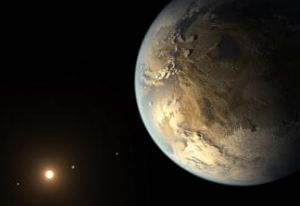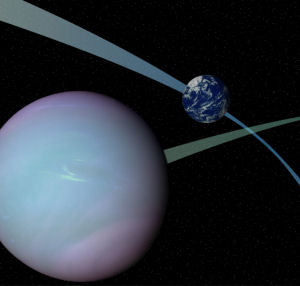
Scientists at Berkeley Lab and the University of Hawaii have shown how DNA’s molecular precursors – carbon ring structures with embedded nitrogen atoms – could be created in the region surrounding a star. The new work adds to previous intriguing observations of what appear to be organic molecules in distant stellar environments.
In the new paper in the Astrophysical Journal, the team describes the experiment in which they recreate conditions around carbon-rich, dying stars to find formation pathways of the important molecules.
“This is the first time anyone’s looked at a hot reaction like this,” says Musahid Ahmed, from the Chemical Sciences Division at Berkeley Lab. “It’s not easy for carbon atoms to form rings that contain nitrogen, but this new work demonstrates the possibility of a hot gas phase reaction – a cosmic barbeque.”
For decades, astronomers have pointed their telescopes into space to look for signatures of these nitrogen-containing double carbon rings called quinoline, Ahmed explains. They’ve focused mostly on the space between stars (the interstellar medium). While the stellar environment has been deemed a likely candidate for the formation of carbon ring structures, no one had spent much time looking there for nitrogen-containing carbon rings.
To recreate the conditions near a star, Ahmed and collaborator Ralf Kaiser, professor of chemistry at the University of Hawaii, used the Advanced Light Source (ALS) at Berkeley Lab.
At the ALS, the researchers used a device called a hot nozzle to simulate the pressures and temperatures in stellar environments of carbon-rich stars. Into the hot nozzle, the researchers injected a gas made of a nitrogen-containing single ringed carbon molecule and two short carbon-hydrogen molecules called acetylene.
Then, using synchrotron radiation from the ALS, the team probed the hot gas to see which molecules formed. They found that the 700-Kelvin nozzle transformed the initial gas into one made of the nitrogen-containing ring molecules called quinolone and isoquinoline, considered the next step up in terms of complexity.
“There’s an energy barrier for this reaction to take place, and you can exceed that barrier near a star, or in our experimental setup,” Ahmed says. “This suggests that we can start looking for these molecules around stars now.”
The experiment provides compelling evidence that the key molecules of quinolone and isoquinoline can be synthesized in these hot environments and then be ejected with the stellar wind to the interstellar medium.
“Once ejected in space, in cold molecular clouds, these molecules can then condense on cold interstellar nanoparticles, where they can be processed and functionalized.” Kaiser adds. “These processes might lead to more complex, biorelevant molecules such as nucleobases of crucial importance to DNA and RNA formation.”
Related:
Discuss this article in our forum
Unusual carbon-based molecule detected 27,000 light years away
US astronomers give nod to complex organics in space
Organic molecule hints at alien life
Primordial DNA could have appeared spontaneously, suggests new study


















Comments are closed.